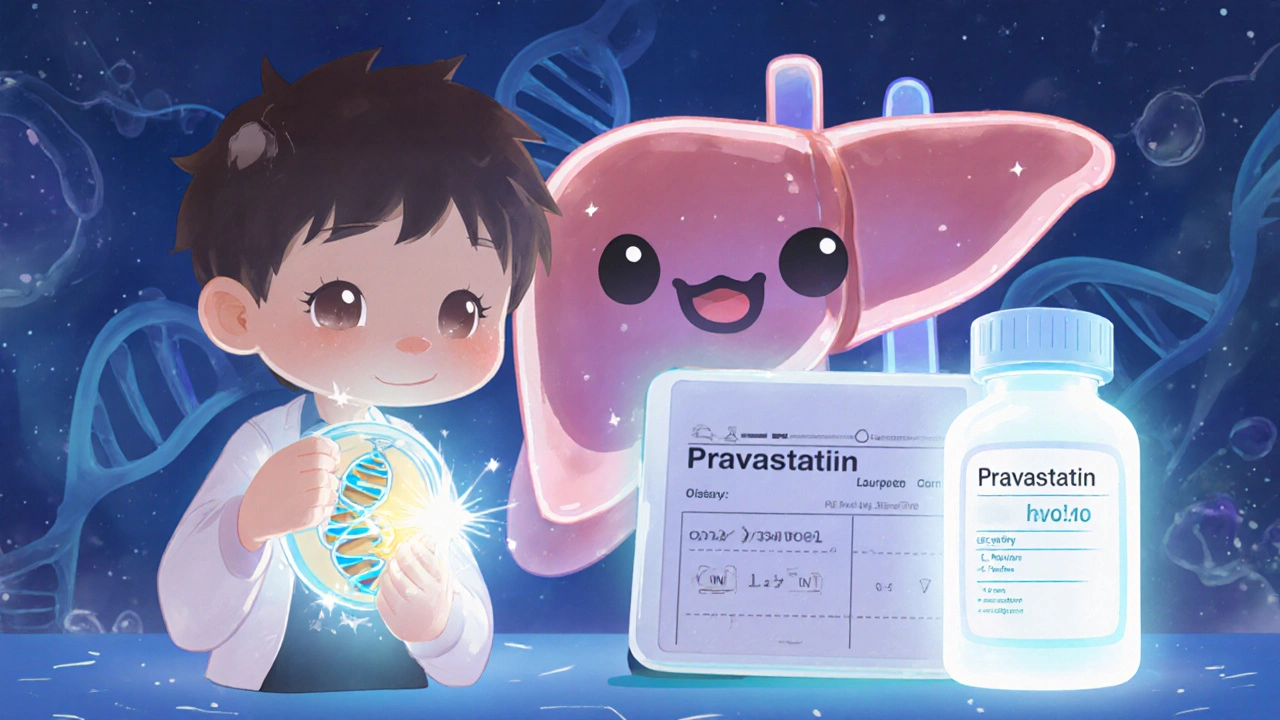Simvastatin Liver Enzyme Checker
This tool helps you understand your liver function test results while taking Simvastatin. Based on clinical studies, serious liver injury is rare, but monitoring is important. Remember, always consult your healthcare provider for medical advice.
Enter Your Liver Test Results
Your Results
Normal Range
Your liver enzymes are within safe limits
What this means
Your liver is processing Simvastatin normally. Continue with your current treatment plan and monitoring schedule as recommended by your healthcare provider.
How common are these results
Based on clinical trials, less than 0.1% of patients experienced clinically significant liver injury from Simvastatin. The vast majority of patients had normal or mildly elevated enzymes that were not clinically significant.
Next steps
- Continue with your regular monitoring schedule (typically at 3-6 months)
- Keep track of any symptoms
- Review any potential interactions with other medications
Your Risk Factors
Important considerations
Patients with pre-existing liver disease, those taking medications that inhibit CYP3A4, excessive alcohol intake, or taking high doses of Simvastatin (80 mg) may have increased risk of elevated liver enzymes.
When doctors prescribe Simvastatin is a lipid‑lowering medication that belongs to the statin class and works by inhibiting HMG‑CoA reductase. patients often wonder how this drug interacts with the liver, the organ that processes most medicines. Understanding that relationship helps you and your clinician catch problems early and keep the heart‑healthy benefits without hurting the liver.
Why Simvastatin Matters for Cardiovascular Health
Simvastatin lowers low‑density lipoprotein (LDL) cholesterol, which reduces the risk of heart attacks and strokes. Large‑scale trials, such as the 4S and HPS studies, showed up to a 30% drop in major cardiovascular events for people on statins compared with placebo. Because heart disease remains the leading cause of death in the UK, clinicians often start a statin early, especially for patients with high LDL or existing cardiovascular disease.
How the Liver Processes Simvastatin
The liver is the primary site of drug metabolism, using enzymes from the cytochrome P450 family-mainly CYP3A4-to break down Simvastatin into inactive forms that the body can excrete. This process is called first‑pass metabolism. When the liver’s enzyme system is overwhelmed or impaired, drug levels can rise, increasing the chance of side effects, including potential liver injury.
Signs of Liver Stress: What to Watch For
- Elevated liver enzymes, especially alanine aminotransferase (ALT) and aspartate aminotransferase (AST)
- Increased gamma‑glutamyl transferase (GGT) or alkaline phosphatase (ALP)
- Unexplained fatigue, nausea, or abdominal pain
- Yellowing of the skin or eyes (jaundice) - a rare but serious sign
Most patients on Simvastatin never experience liver damage. Routine monitoring catches the few cases where enzyme levels rise.
Evidence from Clinical Studies
Across randomized controlled trials (RCTs) involving over 100,000 participants, clinically significant liver injury from Simvastatin occurs in less than 0.1% of users. A meta‑analysis published in the British Medical Journal (2022) found a modest, temporary rise in ALT in about 2% of patients, usually normalizing without stopping the drug.
| Study | Sample Size | ALT ↑ >3× ULN | AST ↑ >3× ULN | Discontinuation Rate |
|---|---|---|---|---|
| 4S (Scandinavian Simvastatin Survival Study) | 4,444 | 0.08% | 0.07% | 0.5% |
| HPS (Heart Protection Study) | 20,536 | 0.12% | 0.09% | 0.6% |
| JUPITER (Justification for the Use of Statins in Prevention) | 17,802 | 0.10% | 0.08% | 0.4% |
These figures show that serious enzyme elevations are rare, and most patients continue therapy without issues.

Risk Factors That Heighten Liver Concerns
While the overall risk is low, certain groups need closer watch:
- Pre‑existing liver disease - patients with hepatitis B, C, or alcoholic liver disease have a higher baseline enzyme level.
- Use of medications that inhibit CYP3A4 (e.g., certain antifungals, macrolide antibiotics, HIV protease inhibitors) can raise Simvastatin concentrations.
- Excessive alcohol intake, which adds strain to the liver’s detox pathways.
- High doses of Simvastatin (80 mg) - the UK’s NHS advises limiting use to 40 mg unless a specialist deems it necessary.
Monitoring Guidelines Recommended by the UK NHS and MHRA
Both the National Health Service (NHS) and the Medicines and Healthcare products Regulatory Agency (MHRA) suggest a baseline liver function test (LFT) before starting a statin. Follow‑up testing is usually performed at 3‑6 months, then annually if results stay normal. If ALT or AST rises to more than three times the upper limit of normal (ULN), clinicians typically pause the medication, repeat the test, and consider dose reduction or switching to a different statin.
Practical Tips for Patients on Simvastatin
- Keep a record of any new symptoms, especially vague fatigue or abdominal discomfort.
- Schedule LFTs as advised - don’t skip the 3‑month check.
- Inform your GP about over‑the‑counter supplements (e.g., St John’s wort) that may interact with CYP3A4.
- Limit alcohol to moderate levels (no more than 14 units per week) to reduce liver strain.
- If you’re prescribed a high dose, ask whether a lower dose or a different statin (like pravastatin, which is less liver‑dependent) could work for you.
By staying proactive, you preserve the heart‑protective benefits while minimizing liver risks.

When to Consider Switching Statins
If liver enzymes stay elevated despite dose adjustment, or if you develop symptoms of liver injury, doctors may switch you to a statin with a lower hepatic metabolism profile, such as pravastatin or rosuvastatin. These drugs rely more on renal excretion and have fewer CYP3A4 interactions.
Future Directions: Biomarkers and Personalized Medicine
Researchers are exploring genetic markers-like variations in the SLCO1B1 gene-that predict how individuals metabolize statins. In the next few years, a simple blood test could identify patients at higher risk of liver enzyme spikes, enabling truly personalized dosing.
Key Takeaways
- Simvastatin dramatically lowers LDL and cuts cardiovascular risk.
- Serious liver injury is rare (<0.1%); mild, temporary ALT rises occur in about 2% of users.
- Baseline and periodic liver function tests are essential, especially for high‑dose users.
- Risk factors like existing liver disease, CYP3A4‑interacting drugs, heavy alcohol use, and high doses increase monitoring needs.
- Switching to a statin with less hepatic metabolism can help if liver enzymes stay high.
Can Simvastatin cause permanent liver damage?
Permanent liver damage from Simvastatin is extremely uncommon. Most enzyme elevations resolve after dose adjustment or a short drug holiday. Persistent elevations should prompt a switch to another statin or further investigation.
How often should I have liver function tests while on Simvastatin?
The NHS advises a baseline test before starting, a follow‑up at 3‑6 months, and then yearly if results stay normal. More frequent testing may be needed if you have risk factors or are on a high dose.
Are there foods or supplements that interact with Simvastatin?
Yes. Grapefruit juice can inhibit CYP3A4 and raise Simvastatin levels. Some herbal supplements, like St John’s wort, have similar effects. It’s best to discuss any dietary changes with your doctor.
What alternatives exist if I develop liver issues on Simvastatin?
Options include switching to pravastatin or rosuvastatin, which rely less on liver metabolism, or using non‑statin cholesterol‑lowering agents like ezetimibe or PCSK9 inhibitors, especially for high‑risk patients.
Is it safe to take Simvastatin while drinking alcohol?
Moderate alcohol consumption (up to 14 units per week) is generally acceptable, but heavy drinking can increase liver strain and raise enzyme levels. Keep intake within recommended limits and discuss any concerns with your GP.
By staying informed and working closely with your healthcare team, you can reap the heart‑protective benefits of Simvastatin while keeping your liver in good shape.






deepak tanwar
November 1, 2025Whilst the published data commend Simvastatin’s cardiovascular benefit, one must question whether the routine hepatic surveillance truly adds safety value; the incidence of clinically significant liver injury remains below one per thousand. Moreover, the emphasis on liver enzyme monitoring may distract clinicians from more pertinent adverse effects such as myopathy. The pharmacokinetic interaction with CYP3A4 inhibitors, for instance, raises concerns that extend beyond hepatic metrics. It would be prudent, therefore, to re‑evaluate the hierarchy of monitoring protocols within a formal risk‑benefit framework. Ultimately, the prescriber’s judgement, informed by patient‑specific risk factors, should dictate the intensity of follow‑up rather than a blanket schedule.